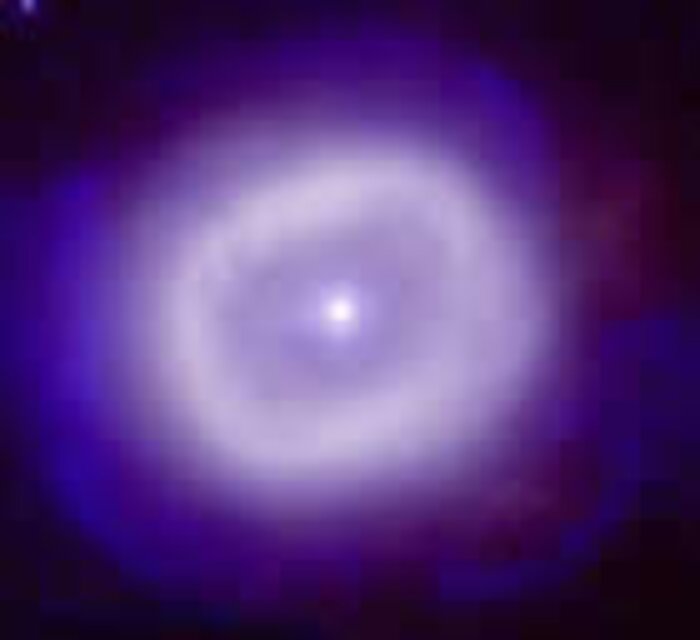White Dwarfs and the Evolution of Stars
White Dwarfs and the Evolution of Stars
Gemini adaptive optics image of a planetary nebula (BD+303639). Planetary nebulae often form around stars which expel mass rapidly late in life as they evolve into white dwarfs. This image was obtained using the University of Hawaii's Hokupa'a adaptive optics system on Gemini North.
Observations and theory give strong evidence that all stars expel a large fraction of their mass throughout their lifetimes. The most intensive phase of this mass loss takes place during a star’s late evolutionary phase. When a star nears the end of its life, its central region contains less fuel for hydrogen burning and the core region contracts until the temperature gets high enough for the nuclear fusion of helium to begin. The structure of the star changes dramatically as hydrogen in the shell surrounding the core also begins burning. Depending on the star’s initial mass on the main sequence (where a star spends most of its hydrogen-burning lifetime), it then enters an unstable period where variations in its temperature, radius and luminosity occur. This can result in structural changes in the star, such as the loss of its external layers.
For stars more than about seven times the mass of the Sun, the ultimate effect of these instabilities is a spectacular supernova explosion. Stars less than about seven solar masses enter a short phase (a few thousand years) that includes successive episodes of mass loss. This eventually leaves behind a stripped stellar core of carbon and oxygen mixed with a degenerate gas of electrons that determine the structure of the remnant. What’s left is called a white dwarf, an important end product of stellar evolution.
White dwarfs have an average diameter of about 10,000 kilometers, about the size of the Earth. However, their final masses are about half that of the Sun, which makes their density about a million times that of most common solid elements found on Earth. The properties of these stellar corpses are fascinating because of the curious nature of the degenerate electrons that provide the pressure to support them. The compressed electrons behave like a solid because of their high conductivity and incompressibility, but they are truly what is known as a degenerate gas. This incompressible quality of white dwarfs has led some call them, “the largest diamonds in the universe.”
The white dwarf phase of a star can last for billions of years, and during this time the object does not generate energy by thermonuclear reactions. The energy that radiates is sustained simply by cooling, just as a hot piece of iron metal emits radiation as it cools.
Credit:International Gemini Observatory/NOIRLab/NSF/AURA
About the Image
| Id: | geminiann05001a |
| Type: | Observation |
| Release date: | Jan. 27, 2005, 5 a.m. |
| Related announcements: | geminiann05001 |
| Size: | 140 x 128 px |
About the Object
| Name: | Gemini North |
| Category: | Nebulae |
